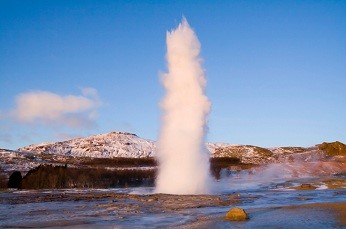The liar, Michael Mann and others can put this in their pipe and smoke it.
Scientists
discover an entirely new reason for methane venting from the Arctic
Shelf
Russian
scientists have discovered a previously unknown mechanism of
influence of salts migration on the degradation of gigantic intra
permafrost gas (methane) hydrate reserves in the Arctic Shelf. The
results of their study were published in Geosciences journal.
21
May, 2019
Methane
is a powerful greenhouse gas and one of the major global climate
change drivers. Following many years of observation in the Arctic
region, Russian scientists eventually found that the East Siberian
Arctic Shelf is one of the largest sources of methane emissions,
which not only expedite global warming and upset the Earth’s carbon
balance, but also cause accidents hindering economic activity in the
Arctic, which is one of the most promising hydrocarbon production
regions. So it comes as no surprise that RAS President, Alexander
Sergeyev, has placed high priority on exploring the reasons for
methane emissions from the East Siberian Arctic Shelf.
A
large part of methane escapes into the atmosphere due to the
decomposition of gas hydrates ‒ crystalline compounds formed from
gas and water at low temperature and high pressure. Clusters of
gas hydrate crystals resemble an ice mass that can just about be
considered a gas in solid state, with a unit volume of gas hydrate
containing up to 160-180 volumes of pure gas. Gas hydrates that
formed thousands of years ago under favorable natural conditions may
start dissociating into gas and water (in other words, “thawing”)
if the natural environment is no longer conducive to their
sustainable existence.
Scientists
from Skoltech, Tomsk Polytechnic University, and the Pacific
Oceanological Institute of the Far Eastern Branch of the Russian
Academy of Sciences (RAS) found that one of the reasons for extensive
methane release from the bottom sediments of the East Siberian Arctic
Shelf is the destabilization of underwater permafrost gas hydrates.
These interact with the salt solutions (seawater) migrating into the
thawing submarine permafrost.
The
authors of the paper were the first to prove experimentally that gas
hydrates become unstable and start to decompose when interacting with
salts even under permafrost conditions.
“We conducted experiments focusing on the interaction between frozen rocks containing relict methane hydrates and salt solutions at different negative temperatures. We found that salt migration to the frozen hydrate-containing rocks intensifies the pore gas hydrates dissociation and accelerates their thawing,” says the Leading Research Scientist at the Skoltech Center for Hydrocarbon Recovery, Evgeny Chuvilin. “Since these processes intensify the release of methane from frozen hydrate-containing rocks, which is important for understanding the mechanism of massive methane discharge from bottom sediments, we used the results of the experiments to build a model of the interaction of the hydrate-saturated permafrost with sea water on the Arctic Shelf.”
These
findings explain the reason for the upward movement of the methane
front that the authors discovered on the East Siberian Arctic Shelf
based on a suite of geophysical and biogeochemical studies. (Shakhova
et al., Nature Communications,
2017; https://www.nature.com/articles/ncomms15872)
*****
The Skolkovo
Institute of Science and Technology (Skoltech) is
a private graduate research university. Established in 2011 in
collaboration with the Massachusetts Institute of Technology (MIT),
Skoltech cultivates a new generation of researchers and
entrepreneurs, promotes advanced scientific knowledge and fosters
innovative technology to address critical issues facing Russia and
the world in the third millennium. Skoltech applies the best Russian
and international research and educational practices, with particular
emphasis on entrepreneurship and innovation.
Web: https://www.skoltech.ru/
Current rates and mechanisms of subsea permafrost degradation in the East Siberian Arctic Shelf
Nature Communications volume8, Article number: 15872 (2017) | Download Citation
Abstract
The rates of subsea permafrost degradation and occurrence of gas-migration pathways are key factors controlling the East Siberian Arctic Shelf (ESAS) methane (CH4) emissions, yet these factors still require assessment. It is thought that after inundation, permafrost-degradation rates would decrease over time and submerged thaw-lake taliks would freeze; therefore, no CH4 release would occur for millennia. Here we present results of the first comprehensive scientific re-drilling to show that subsea permafrost in the near-shore zone of the ESAS has a downward movement of the ice-bonded permafrost table of ∼14 cm year−1 over the past 31–32 years. Our data reveal polygonal thermokarst patterns on the seafloor and gas-migration associated with submerged taliks, ice scouring and pockmarks. Knowing the rate and mechanisms of subsea permafrost degradation is a prerequisite to meaningful predictions of near-future CH4 release in the Arctic.




No comments:
Post a Comment
Note: only a member of this blog may post a comment.